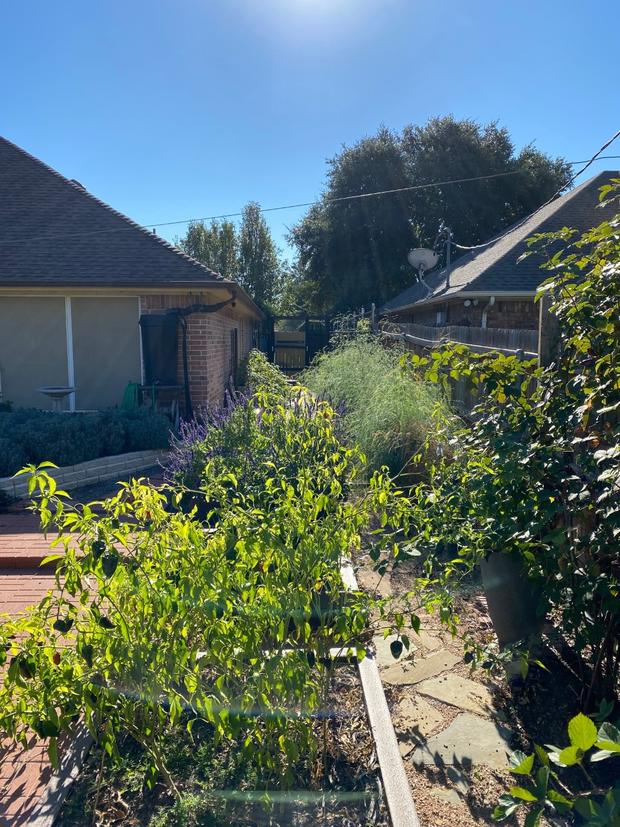Gardening 101: Mulch Is The Forest Floor
I had the great fortune to take a Landscaping Design class a few years back from Dr. Steve George through the Texas A&M AgriLife Extension program. It might have been the most inspiring class I've ever taken. It launched me into a landscape design hobby that still goes on to this day. Just to show you what I mean, below is series of photos taken in my backyard from the same vantage point. (left to right: 2013, 2016, 2020)
The reason I'm writing about Dr. Steve George is because of something he told me about mulch that sticks to me to this day. Three inches of fine shredded, native hardwood mulch (no dye) is a re-creation of the forest floor.
Think about that for a second. When was the last time an entire forest required fertilizer? Forests make their own by shedding leaves every fall and limbs year-around. All this hits the ground and slowly breaks down, releasing all the nutrients living plants need. If you have trees or shrubs that are listed in Earth-Kind, you only have to mulch them once or twice a year (preferable twice a year but it depends on how the last layer is breaking down). Make sure to water to establish (the first year, maybe two) and then water them across droughts. Other than pruning that should be all your tree or shrub requires. Many of your perennials are the same way.
Mulch is the magic that slowly turns our clay soils into a deep bed of rich soil. Mulch prevents sunlight from reaching the soil and decreases weed growth around your plants. Mulch helps soak up beneficial summer rains and then keeps the water from evaporating away. Mulch keeps your plants from overheating in the summer and getting too cold in the winter. Mulch keeps your soil for getting blown away in wind during dry periods. Mulch is the forest floor.
In short, if you are not mulching EVERTHING you are growing you are missing the boat. In this week's Garden 101 segment I talked with another Texas AgriLife specialist, Daniel Cunningham on what types of mulch you can use in your garden. The fine shredded hardwood will tackle most of your needs. I like using the pine needles or straw on my vegetables. They break down quickly which insures that mulch adds and not deletes nitrogen. As wood breaks down it can rob the soil of the nutrient in the top layers. Also, most soils are alkaline in these parts; the pine slow-releases acid that can help buffer the soil closer to that sweet spot of a 7.2 or 7.0 pH.
Another thing I really like about straw or pine needles is that in threat of frost I can simply push up a pile around the core of the plant to help protect it from frost. When the day starts to warm up I simply push it back down.
A couple of other important points. Read the label. Make sure it says "Forest Product" on the package. Some mulch is made from chipped palates so you have no idea where that wood came from or if it has been pressure treated. Daniel also says don't use dyed mulch, it is much safer to go with an all-natural product. Think about years of putting down mulch in the same place and you can imagine the importance of not accumulating any artificial product where you grow food you eat.
I always keep a couple of bags of different kinds of mulch in my shed for when I put in new plants or move around old ones. Every Fall and Spring I take my truck and buy a cubic yard of fine-shredded hardwood mulch (about $35) from a landscape supply business. I put 2"- 3" around every tree, shrub and cover every raised bed. After 5-6 years of this I have areas of my yard that once had soil only a few inches deep, now have a soil bed over a foot deep and getting deeper. Not only is it living soil that feeds my plants, it holds by a factor more water to keep my plants from getting stressed in times of hot, dry weather. Deep, rich soil is a blessing. Just go to the forest and see for yourself.





